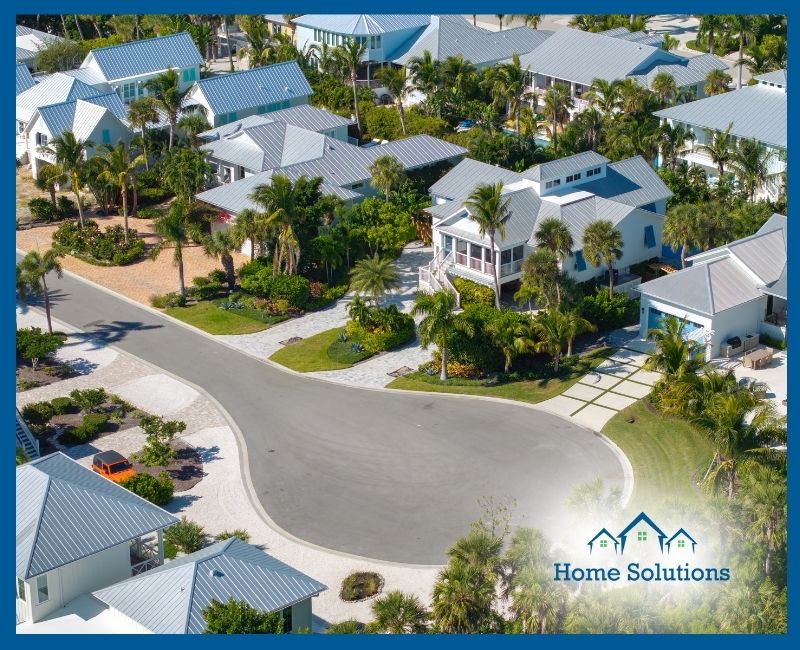Attracting and retaining quality tenants is essential for successful property management. Focusing on finding responsible renters who value your property and building positive relationships encourages long-term occupancy. This minimizes turnover and ensures consistent income. Learn key strategies for finding and keeping the best tenants for your properties.
Home Solutions is a property management company providing professional services to optimize client property investments. Our expert team offers comprehensive services, including tenant management, maintenance, and strategic planning to maximize returns. We deliver personalized attention and transparent oversight to meet our clients’ unique goals. Get in Touch — We Bring Back Your Peace of Mind and Maximize Your Income.
It goes without saying that quality tenants are crucial to the profitability of a rental property. Good tenants pay their rent on time, keep the property well-maintained, and are easy to communicate with when situations arise. Finding good renters can feel daunting, but with a solid plan in place, property managers can feel confident that they are vetting and leasing to the best possible tenants. A robust tenant-retention plan should be implemented in conjunction with a rigorous screening process. Once you attract quality renters, it is important to maintain a good experience for them to reduce turnover and have a stable income.
Attracting Quality Tenants
Make Your Property Desirable
High-quality tenants are generally looking for properties that are modern and well-maintained and that fit their lifestyle. Before taking property photos or scheduling showings, make all necessary repairs and use your budget strategically to make upgrades that are most desired by your prospective renters. Take a walkthrough of the property with a critical eye; look at the landscaping, outside of property, entrance, and inside of the property. First impressions are important, and the renters whom you are looking for are paying attention to details. You want your ideal tenants to see themselves living in the property, walking up to their front door and inviting their friends and family over. Be honest with yourself about the condition of the property and you will be able to direct your efforts toward the most beneficial changes.
Create An Effective Listing And Make Sure People See It
Take time to write property listings because they are the first opportunity you have to reach your target renters. Highlight trending property features like farmhouse sinks or quartz countertops that make prospective tenants want to see your property. There is often a lot of competition for renters, and you want to stand out from the crowd. The goal of the listing is to get people to schedule property walkthroughs.
A good listing is a 5-6 sentence paragraph that clearly describes your property and explains its best features. The listing should be clear and easy for anyone to read. Before you publish the final draft, have everyone in your office take a look to make sure that there are no errors and that it’s easy to read. High-quality photos can attract more prospective renters, which gives you the opportunity to be more selective. Hiring a professional photographer or keeping a contracted photographer on your staff is my recommendation. But, if you need to take the listing photos yourself, make sure to use a high-quality camera and to take them during the day when there is good lighting.
To get your listing in front of more people, you should post it in online forums like Zillow and community boards, as well as at local businesses or colleges.
Screen Tenants
Robust tenant screening is one of the most important aspects of securing high-quality tenants. Set your parameters and make sure that you treat all tenants fairly when applying them. It can be tempting to bend the rules that you have established for certain people, but it is usually best to apply the rules indiscriminately. This will ensure that you are within the bounds of the law and also provide a more objective way to approve tenants. Balancing thorough checks with a respectful and professional approach is the best way to approach screenings. Whenever possible, meet with prospective tenants in person so that you can get a well-rounded understanding of who they are and how reliable they appear to be.
Retaining Quality Tenants
Once you have good tenants in place, the priority should be keeping them. Tenant turnover is expensive, time-consuming and stressful for property managers and property owners.
Perform Proactive Maintenance And Timely Repairs
You want your tenants to know that they have a nice and safe place to live, and that starts with maintaining a property. Responding to maintenance requests quickly is one of the most effective ways for your tenants to feel respected and happy with where they live. Conducting routine inspections to check on property upkeep and maintaining a preventative maintenance schedule can help keep the property aesthetically pleasing and functioning as expected.
Be Fair And Transparent
Making fair decisions and communicating issues and policy changes clearly builds trust between you and your tenants. All expectations and policies should be expressed in writing so that they can be referenced should any disagreements arise. If a disagreement comes up, handle it professionally and fairly. Tenants are less likely to move out or have a bad experience if you are honest and upfront with policies and decisions. They lose trust when they feel like they are being taken advantage of or disrespected. People want to connect with people and want to do business with companies that align with their values (and respect them). Make yourself someone that your tenants respect and retention rates should naturally increase.
Offer Different Lease Terms And Incentives (Based On Fair Housing Rules)
Offering renewal discounts or small upgrades for loyal tenants can go a long way toward encouraging tenants who may be on the fence to sign another lease. These concessions will be worth it in the long run because they typically cost much less than having a vacant unit or having to turn it over for a new move-in.
Consider flexibility around rental renewal options as a way of keeping good tenants and removing the work that comes along with the end of a tenant’s lease term. You could offer multi-year discounts or month-to-month options to meet the needs of your best tenants. Other options include offering lower rent for signing during off-peak times, offering customized lease terms and rental rates for good tenants who have been with you for a long time, and offering lower rent to tenants willing to sign long-term leases.
Attracting and retaining quality tenants is essential for a successful property management business. By focusing on listing desirable properties, conducting thorough screenings, and prioritizing tenant satisfaction, you can build long-term relationships with reliable renters. These small steps can minimize turnover and vacancy costs and create a stable and stress-free management experience.
Ready to consistently attract and retain high-quality tenants for your properties? Explore our property management services to help you foster long-term tenancies more effectively. Call us today at (954) 545-3027. Follow us on Instagram @homesolutionspm.
Reference: [https://www.forbes.com/councils/forbesbusinesscouncil/2025/01/28/how-to-attract-and-retain-quality-tenants/]





































